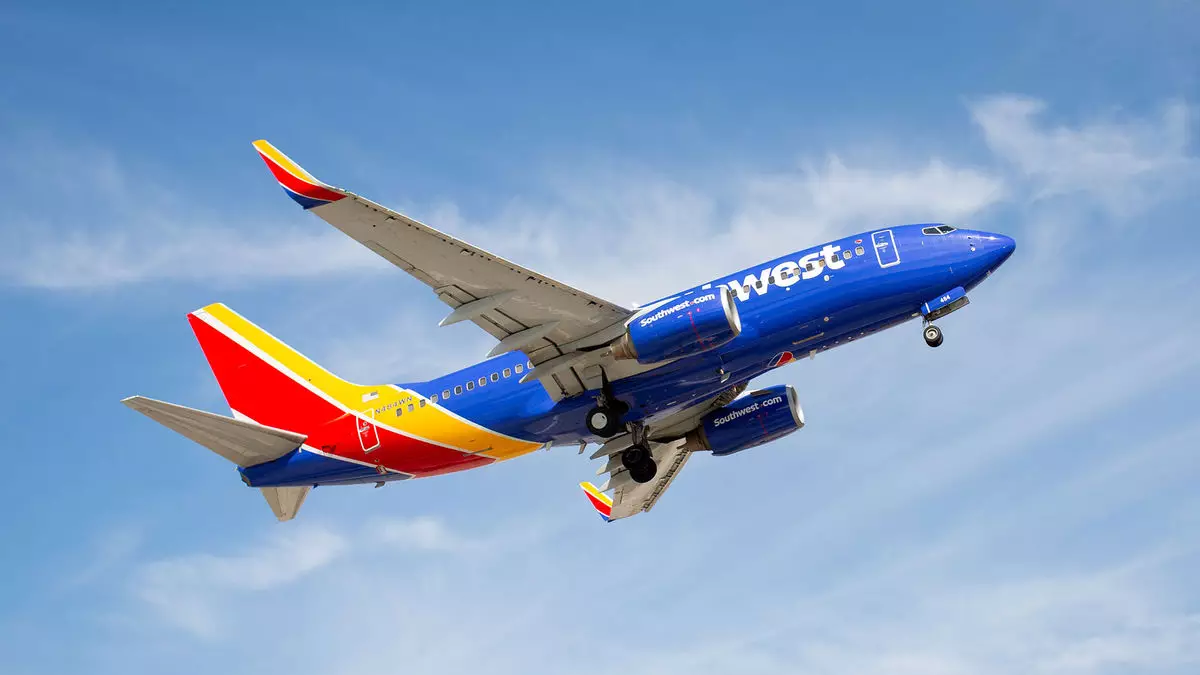As Southwest Airlines embarks on a strategic transformation designed to boost revenue and enhance operational efficiency, the airline faces formidable challenges, not least of which is a looming proxy battle with activist investor Elliott Investment Management. The details shared during the recent Investor Day underscore both the airline’s ambitions and the critical tests it faces in executing a roadmap meant to elevate its financial performance to historical highs.
Southwest Airlines has laid out an ambitious goal to generate an additional $4 billion in revenue by 2027, alongside targeting an operating margin of 10%. This financial projection is predicated on a slew of new initiatives that aim to modernize the customer experience while improving the efficiency of existing operations. However, the success of this strategy hinges significantly on the current management team remaining in place to execute it. CEO Bob Jordan emphasizes his commitment to steering the airline through these tumultuous waters, yet his leadership faces skepticism from Elliott Investment Management, which holds a significant 11% stake in the company and is advocating for a shift in board representation.
Elliott has voiced strong criticism of Jordan’s timeline for implementation, particularly noting that the planned changes, which include extra-legroom seating and assigned seating, are set to unfold over a protracted period. This delay stands in stark contrast to competitors who have successfully executed similar changes more swiftly. The firm has already announced its intention to present its own slate of candidates for the board, highlighting the potential for a disruption that could derail Southwest’s carefully crafted plans.
Central to Southwest’s strategy is the introduction of innovative seating options, particularly extra-legroom seats that will be available in varying configurations across the fleet. These changes are set to roll out starting in 2025, with retrofitting expected to occur at a rate of 50 to 100 aircraft per month, culminating by the end of next year. The additional space provided by these new seats aims to enhance customer satisfaction in an increasingly competitive market where comfort and amenities have become key battlegrounds.
However, to accommodate these new seating arrangements, Southwest will reduce the standard seat spacing on larger aircraft, thereby raising questions about whether this trade-off will truly appeal to customers looking for comfort without sacrificing affordability. Strategic seat adjustments must be managed carefully, as any misstep could alienate longstanding customers accustomed to Southwest’s traditionally spacious arrangements.
In the pursuit of operational excellence, the implementation of assigned seating—a significant departure from the airline’s open seating policy—requires updates to over 60 technological platforms. Ryan Green, Southwest’s Executive Vice President of Transformation, has acknowledged these technological hurdles, which serve as both a logistical challenge and a potential source of frustration if not handled meticulously.
New Business Ventures and Market Partnerships
In addition to the changes in seating, Southwest is making strides in diversifying its business model. The upcoming launch of its vacation-package brand, dubbed Getaways by Southwest, signals a marked shift toward a more inclusive travel service. This initiative aims to integrate vacation planning directly into the Southwest website and other channels, potentially offering customers streamlined options that enhance loyalty through the ability to utilize Rapid Rewards points for purchases.
Furthermore, the airline is expanding its footprint in the leisure travel segment through partnerships, such as the upcoming collaboration with Icelandair. This endeavor represents a strategic move to tap into new market segments by offering ticket segments on Southwest routes, thereby broadening its customer base while simultaneously enhancing revenue streams.
The cruise sales initiative through SouthwestCruises.com further underscores the airline’s commitment to capturing a larger share of the travel pie, an essential step toward stability in an industry fraught with competition and fluctuating demand.
As Southwest Airlines endeavors to reclaim its position as a top performer in the airline industry, it must deftly navigate both internal and external challenges. The competitive landscape demands that it not only enhance its service offerings but also adeptly manage shareholder relations to secure the leadership continuity essential for executing its ambitious plans. The coming months promise to be critical as Southwest approaches key decisions that will shape its trajectory. The airline’s ability to integrate these innovations while maintaining its core operational ethos will determine whether it can achieve the $4 billion revenue goal and return to its historically robust profit margins.


Leave a Reply